Detecting the Extremely Small Angle of an Axicon by Phase-Shifting Digital Holography
Abstract
1. Introduction
2. Theoretical Analysis
3. Experimental Result
4. Conclusions
Author Contributions
Funding
Conflicts of Interest
References
- Durnin, J. Diffraction-free beams. Phys. Rev. Lett. 1987, 58, 1499–1501. [Google Scholar] [CrossRef] [PubMed]
- Tao, S.H.; Yuan, X.C. Self-reconstruction property of fractional Bessel beams: Reply to comment. J. Opt. Soc. Am. A 2009, 26, 2182. [Google Scholar] [CrossRef]
- Litvin, I.A.; McLaren, M.G.; Forbes, A. A conical wave approach to calculating Bessel-Gauss beam reconstruction after complex obstacles. Opt. Commun. 2009, 282, 1078–1082. [Google Scholar] [CrossRef]
- Gori, F.; Santarsiero, M. Twisted Gaussian Schell-model beams as series of partially coherent modified Bessel-Gauss beams. Opt. Lett. 2015, 4, 1587–1590. [Google Scholar] [CrossRef] [PubMed]
- Ye, H.; Huang, K.; Liu, H. Intrinsically shaping the focal behavior with multi-ring Bessel-Gaussian beam. Appl. Phys. Lett. 2017, 111, 031103. [Google Scholar] [CrossRef]
- Yang, L.; Ji, S.; Xie, K. High efficiency fabrication of complex microtube arrays by scanning focused femtosecond laser Bessel beam for trapping/releasing biological cells. Opt. Express 2017, 25, 8144–8157. [Google Scholar] [CrossRef] [PubMed]
- Ayala, Y.A.; Arzola, A.V.; Volke-Sepulveda, K. 3D micromanipulation at low numerical aperture with a single light beam: The focused-Bessel trap. Opt. Lett. 2016, 41, 614–617. [Google Scholar] [CrossRef]
- Rui, G.; Wang, X.; Cui, Y. Manipulation of metallic nanoparticle with evanescent vortex Bessel beam. Opt. Express 2015, 23, 25707–25716. [Google Scholar] [CrossRef]
- Wang, X.; Liu, Z.R.; Zhao, D. Fractional Fourier transform of hollow sinh-Gaussian beams. Opt. Eng. 2014, 53, 086112. [Google Scholar] [CrossRef][Green Version]
- Summers, A.M.; Yu, X.; Wang, X. Spatial characterization of Bessel-like beams for strong-field physics. Opt. Express 2017, 25, 1646–1655. [Google Scholar] [CrossRef]
- Zhang, Z.; Zeng, X.; Miao, Y.; Fan, Y.; Gao, X. Focusing properties of vector Bessel-Gauss beam with multiple-annular phase wavefront. Optik 2017, 157, 240–247. [Google Scholar] [CrossRef]
- Chen, S.; Li, S.; Zhao, Y. Demonstration of 20-Gbit/s high-speed Bessel beam encoding/decoding link with adaptive turbulence compensation. Opt. Lett. 2016, 41, 4680–4683. [Google Scholar] [CrossRef] [PubMed]
- Schreiber, B.; Elsayad, K.; Heinze, K.G. Axicon-based Bessel beams for flat-field illumination in total internal reflection fluorescence microscopy. Opt. Lett. 2017, 42, 3880–3883. [Google Scholar] [CrossRef] [PubMed]
- Thibon, L.; Lorenzo, L.E.; Piche, M. Resolution enhancement in confocal microscopy using Bessel-Gauss beams. Opt. Express 2017, 25, 2162–2177. [Google Scholar] [CrossRef] [PubMed]
- Wu, B.; Zeng, X.; Miao, Y.; Fan, Y.; Gao, X.; Zhuang, S. Focal shift of radial varying polarized Bessel-Gauss beam with radial phase modulation. Optik 2017, 157, 675–683. [Google Scholar] [CrossRef]
- Li, X.; Ji, X. Effect of thermal blooming on the beam quality of truncated laser beams. Optik 2016, 127, 8350–8356. [Google Scholar] [CrossRef]
- Ouadghiri-Idrissi, I.; Giust, R.; Froehly, L. Arbitrary shaping of on-axis amplitude of femtosecond Bessel beams with a single phase-only spatial light modulator. Opt. Express 2016, 24, 1495–1504. [Google Scholar] [CrossRef]
- Litvin, I.A.; Mhlanga, T.; Forbes, A. Digital generation of shape-invariant Bessel-like beams. Opt. Express 2015, 23, 7312–7319. [Google Scholar] [CrossRef]
- Dudley, A.; Li, Y.; Mhlanga, T. Generating and measuring nondiffracting vector Bessel beams. Opt. Lett. 2013, 38, 3429–3432. [Google Scholar] [CrossRef]
- Pavone, S.C.; Ettorre, M.; Casaletti, M. Transverse circular-polarized Bessel beam generation by inward cylindrical aperture distribution. Opt. Express 2016, 24, 11103. [Google Scholar] [CrossRef]
- Wang, D.; Li, B.; Rong, L. Extended depth of field in continuous-wave terahertz computed tomography based on Bessel beam. Opt. Commun. 2019, 432, 20–26. [Google Scholar] [CrossRef]
- Selcuk, A.; Bing, Z. Intensity distribution around the focal regions of real axicons. Opt. Commun. 2008, 281, 4240–4244. [Google Scholar]
- Ma, J.; Pruss, C.; Häfner, M.; Heitkamp, B.; Zhu, R.; Gao, Z.; Yuan, C.; Osten, W. Systematic analysis of the measurement of cone angles using high line density computer-generated holograms. Opt. Eng. 2011, 50, 055801. [Google Scholar]
- Zhang, Y.B.; Zeng, A.J.; Wang, Y.; Huang, H.J. A method for measuring the base angle of axicon lens based on chromatic dispersion. Opt. Commun. 2015, 346, 69–73. [Google Scholar] [CrossRef]
- Wei, Z.; Yuan, Q.; Ma, X. Measurement of base angle of an axicon lens based on auto-collimation optical path. Opt. Commun. 2019, 434, 23–27. [Google Scholar] [CrossRef]
- Yamaguchi, I.; Zhang, T. Phase-shifting digital holography. Opt. Lett. 1997, 22, 1268–1270. [Google Scholar] [CrossRef]
- Nomura, T.; Shinomura, K. Generalized sequential four-step phase-shifting color digital holography. Appl. Opt. 2017, 56, 6851–6854. [Google Scholar] [CrossRef]
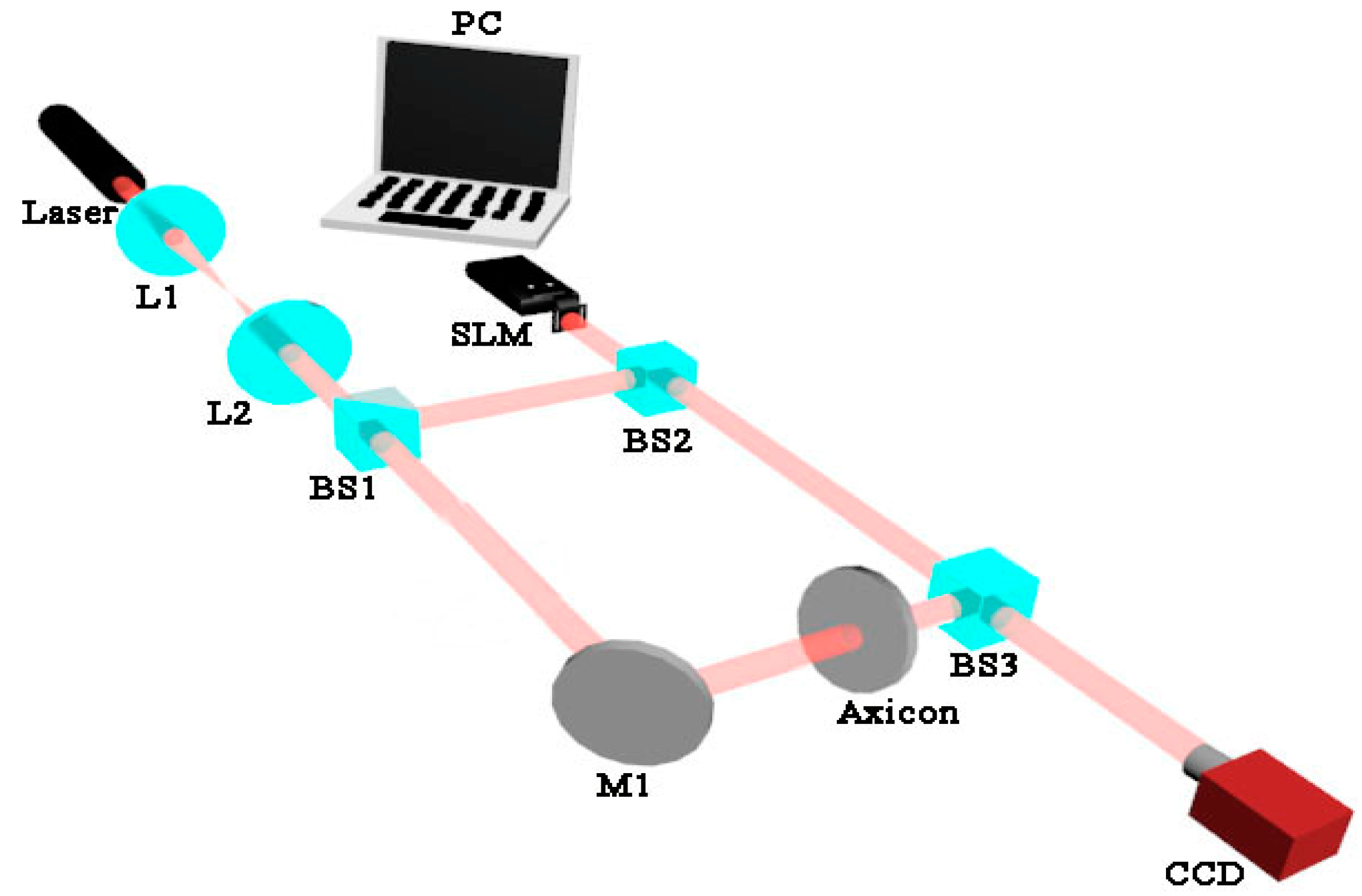
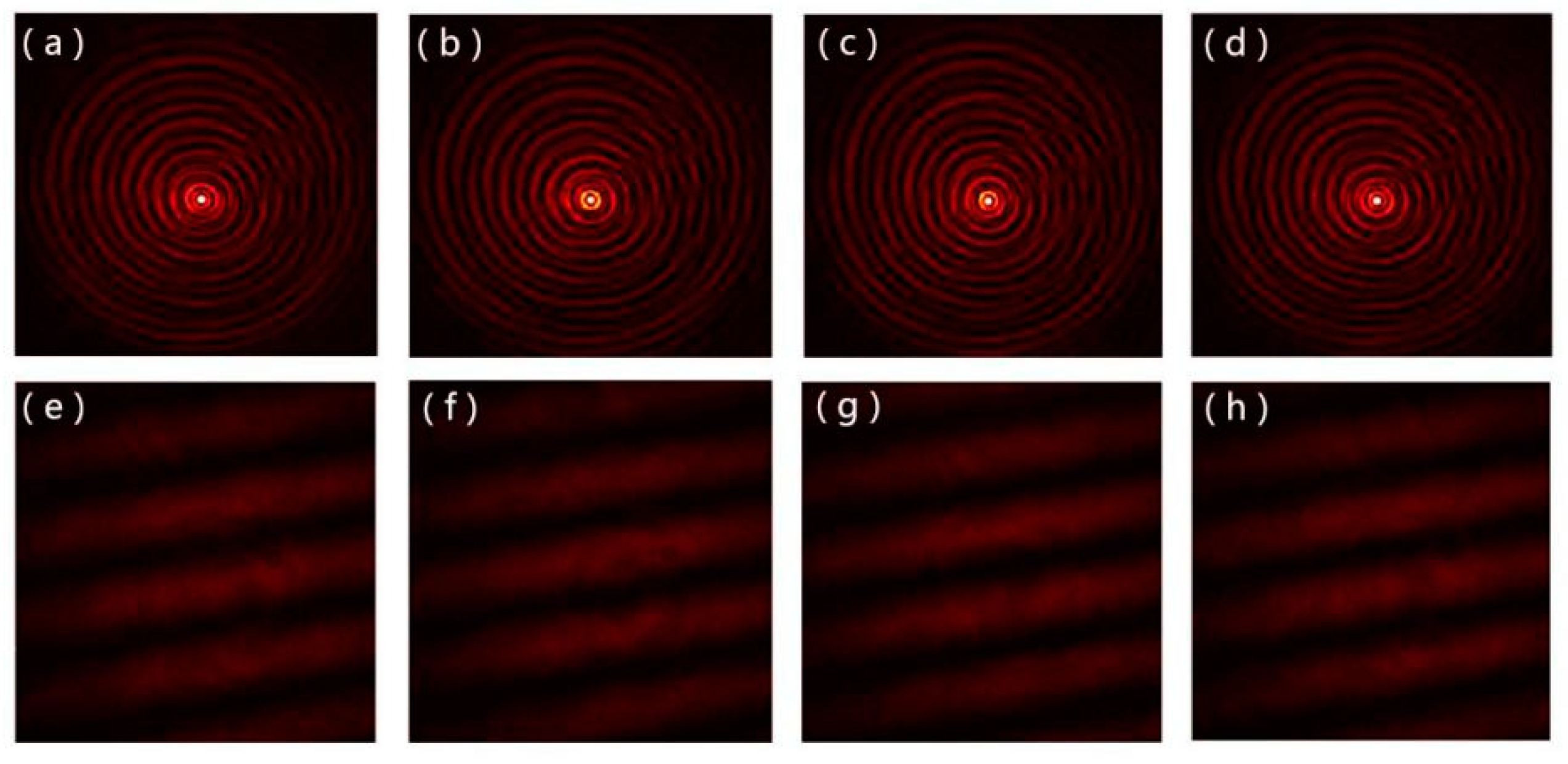
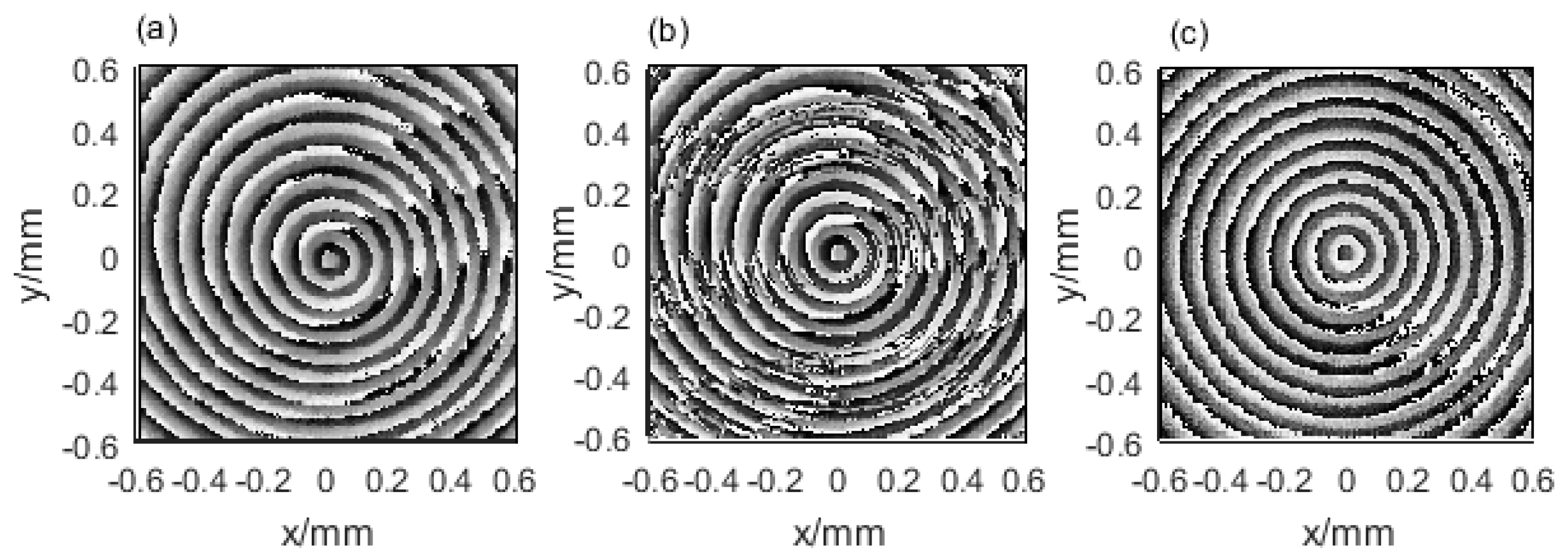
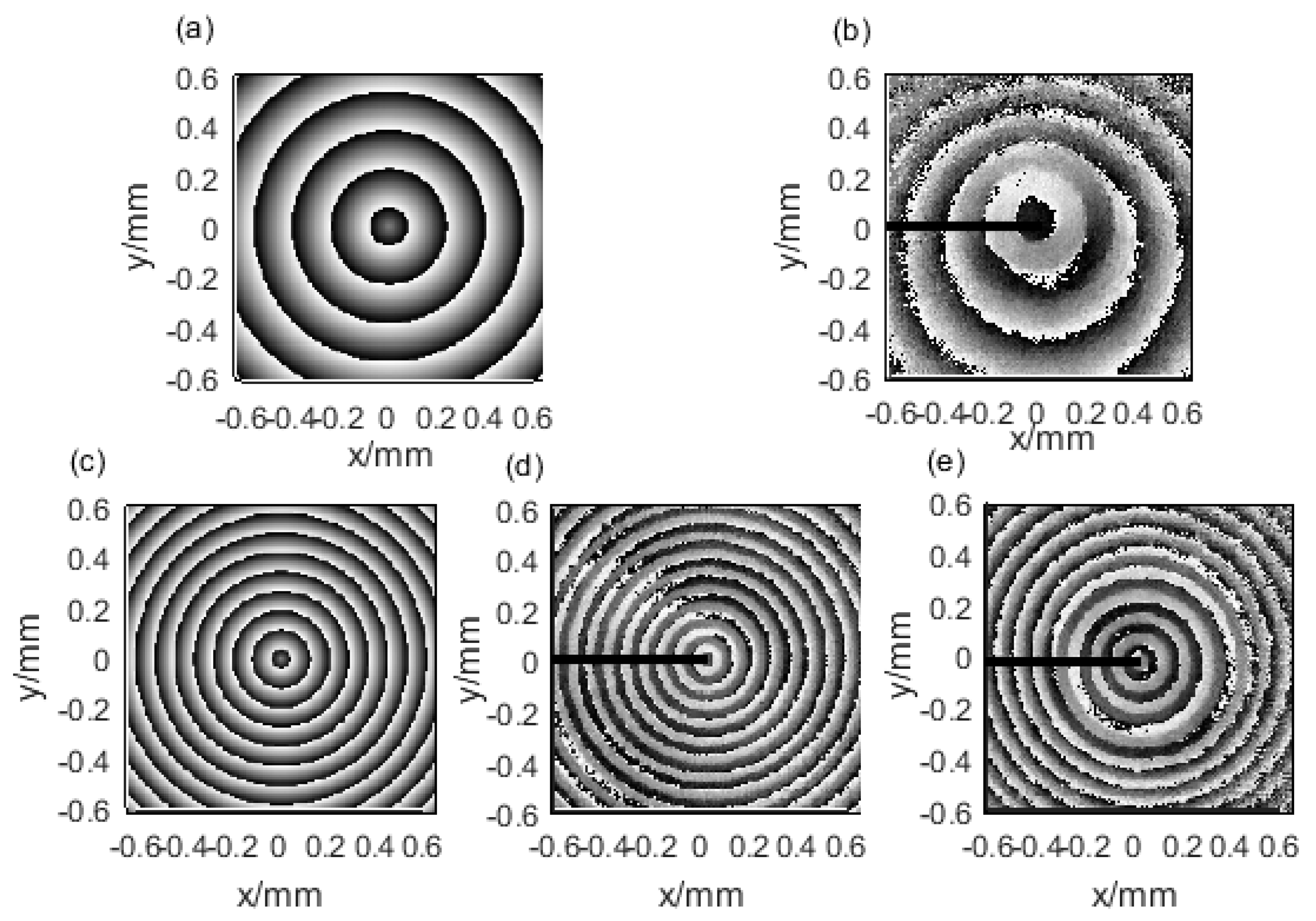
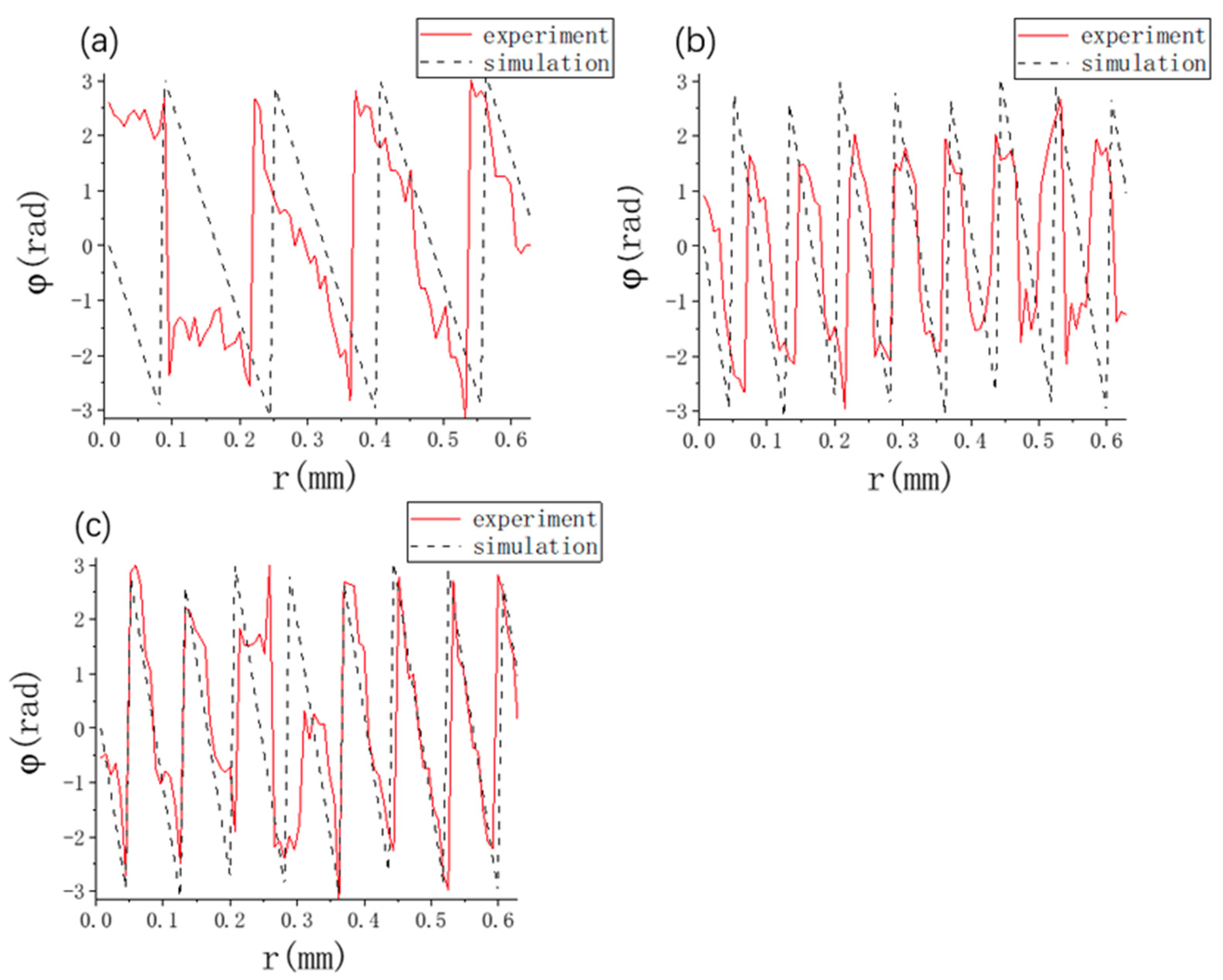
© 2019 by the authors. Licensee MDPI, Basel, Switzerland. This article is an open access article distributed under the terms and conditions of the Creative Commons Attribution (CC BY) license (http://creativecommons.org/licenses/by/4.0/).
Share and Cite
Zheng, Y.; Chen, L.; Fan, W.; Hu, X.; Chen, Z.; Pu, J. Detecting the Extremely Small Angle of an Axicon by Phase-Shifting Digital Holography. Appl. Sci. 2019, 9, 3959. https://doi.org/10.3390/app9193959
Zheng Y, Chen L, Fan W, Hu X, Chen Z, Pu J. Detecting the Extremely Small Angle of an Axicon by Phase-Shifting Digital Holography. Applied Sciences. 2019; 9(19):3959. https://doi.org/10.3390/app9193959
Chicago/Turabian StyleZheng, Yuchuan, Li Chen, Weiru Fan, Xiansheng Hu, Ziyang Chen, and Jixiong Pu. 2019. "Detecting the Extremely Small Angle of an Axicon by Phase-Shifting Digital Holography" Applied Sciences 9, no. 19: 3959. https://doi.org/10.3390/app9193959
APA StyleZheng, Y., Chen, L., Fan, W., Hu, X., Chen, Z., & Pu, J. (2019). Detecting the Extremely Small Angle of an Axicon by Phase-Shifting Digital Holography. Applied Sciences, 9(19), 3959. https://doi.org/10.3390/app9193959





